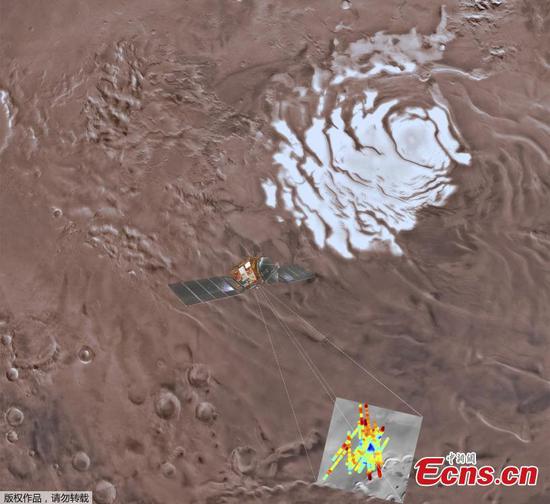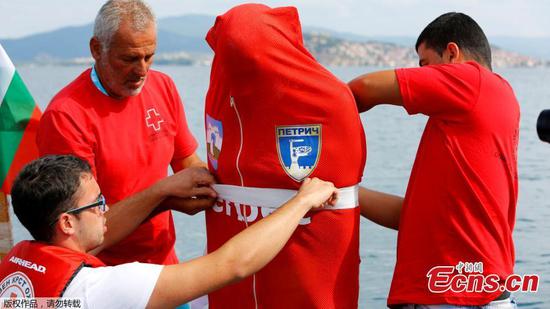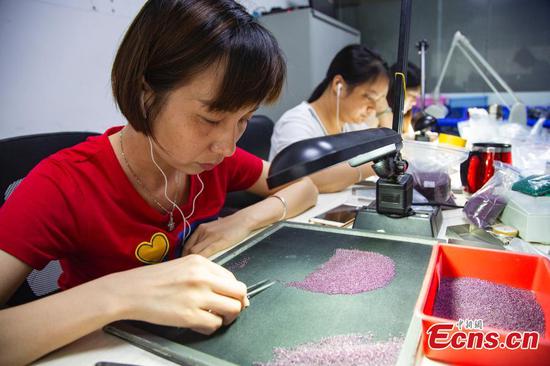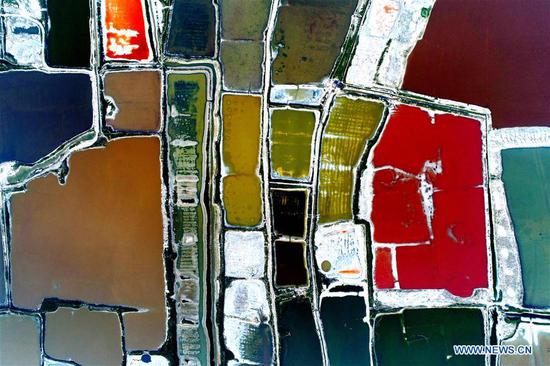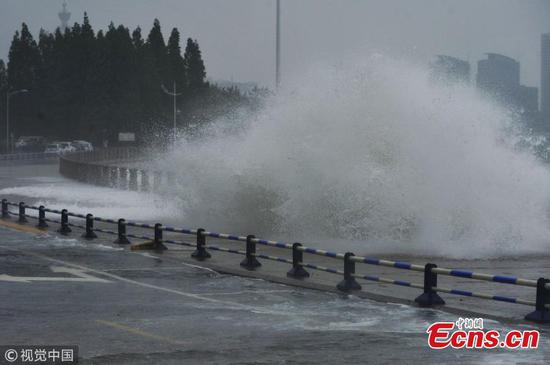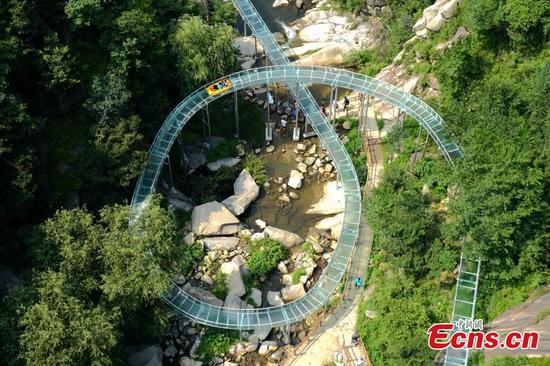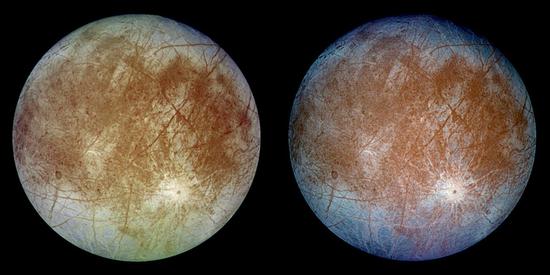
This image shows two views of the trailing hemisphere of Jupiter's ice-covered satellite, Europa. /NASA Photo
If signs of life exist on Jupiter's icy moon Europa, where should scientists look, and how deep will they have to go? A new study may offer key pieces to the puzzle.
In the 1990s, the U.S. National Aeronautics and Space Administration (NASA)'s Galileo mission provided strong evidence of a global ocean underneath Europa's icy shell. Since then, scientists have considered that Jupiter's moon is one of the most promising places in our solar system to look for ingredients to support life. There's also evidence that the salty water sloshing in the moon's interior is making its way to the surface.
By studying this material in the interior, scientists developing future missions hope to learn more about the possible habitability of Europa's ocean.
The problem is that Europa gets bombarded by radiation from its parent planet, which would be harmful to any potential life there.
But the new scientific study, published Monday in Nature Astronomy, represents the most complete modeling and mapping of radiation at Europa and reveals where researchers should look, and how deep they will have to go, while searching for indications of habitability and biosignatures.
"If we want to understand what's going on at the surface of Europa and how that links to the ocean underneath, we need to understand the radiation," Tom Nordheim, lead author and research scientist at NASA's Jet Propulsion Laboratory (JPL), was quoted as saying in a press release.
"When we examine materials that have come up from the subsurface, what are we looking at? Does this tell us what is in the ocean, or is this what happened to the materials after they have been radiated?" he said.
Using data from Galileo's flybys of Europa two decades ago and electron measurements from NASA's Voyager 1 spacecraft, Nordheim and his team looked closely at the electrons blasting the moon's surface.
Researchers found that the radiation does vary by location. The harshest radiation is concentrated in zones around the equator, while the radiation lessens at the poles.
This could be crucial information for the JPL-led Europa Clipper, NASA's mission to orbit Jupiter and monitor Europa with about 45 close flybys. The spacecraft is scheduled to launch in the early 2020s.
NASA is also working on a possible post-Clipper lander mission that would search for evidence of life at or near Europa's surface.
How deep scientists need to dig or drill, in a potential future Europa lander mission, to find any biosignatures that might be preserved?
In his new paper, Nordheim went deeper, gauging how far below the surface the radiation penetrates, and building 3D models of the most intense radiation on Europa.
The answer varies, from 10 to 20 cm in the highest-radiation zones - down to less than 1 cm deep in regions of Europa at middle- and high-latitudes, toward the moon's poles.
Europa Clipper's mission team is examining possible orbit paths, and has proposed routes which will pass over many regions of Europa which experience lower levels of radiation, said Kevin Hand, co-author of the new research.
"That's good news for looking at potentially fresh ocean material that has not been heavily modified by the fingerprint of radiation," said Hand.










